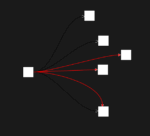Apache Spark has revolutionized the field of big data analytics by empowering teams to process enormous amounts of data with unrivaled speed and adaptability. However, optimizing your Spark jobs isn’t just about unlocking faster execution—it’s integral to driving smarter business decisions and maximizing profitability in competitive, innovation-focused environments.
As data specialists and strategic partners in advanced analytics consulting, we witness firsthand how even small improvements in Spark performance lead directly to more responsive analytics and stronger business outcomes. By incorporating industry-proven best practices, you can dramatically improve your data processing efficiency, reduce resource consumption, and position your organization at the forefront of the analytics landscape. Keep reading to discover the top strategies we’ve uncovered for extracting maximum value from your Spark infrastructure and investments.
1. Efficiently Manage Spark Data Partitions
Partitioning in Spark is foundational to efficiency, directly impacting how effectively resources are used during computation. Too few partitions can underutilize available resources, while too many partitions introduce excessive overhead. As strategic advisors focused on maximizing the return on your analytics investments, we emphasize the need to balance partition numbers carefully based on your infrastructure and data size. Spark’s default partitioning might not always align with your specific processing needs, leading to suboptimal execution and unnecessary latency. To ensure optimal performance, size partitions appropriately (generally between 128mb and 1gb recommended per partition) and perform benchmarking to find your ideal partition count. Utilizing functions such as repartition() and coalesce() allows for more precise adjustments of your partition strategy, significantly enhancing resource utilization and job execution efficiency.
2. Optimize Spark’s Data Serialization
Serialization—the method Spark uses to encode and transfer data—is crucial to optimizing performance. Spark’s default serialization method, Java Serialization, lacks comfort in performance for large-scale analytics operations. We consistently recommend implementing the more efficient serialization framework, Kryo Serialization, which dramatically reduces memory consumption and execution time. To move beyond the default settings, set Spark to use Kryo by configuring your Spark job parameters (spark.serializer) accordingly. Registering serialized classes explicitly can further significantly boost efficiency. Efficient serialization translates to less network traffic and faster compute cycles, directly creating capacity for scaling analytics workloads effectively. Adopting Kryo Serialization is a simple yet powerful upgrade that provides Spark jobs and your analytics processes a substantial competitive advantage.
3. Utilize Broadcast Variables for Large Shared Data
Broadcast variables in Spark greatly enhance job efficiency when handling large, immutable reference datasets used commonly across jobs. Rather than copying sizeable datasets across multiple executors, Spark’s broadcast variables send cached data directly to worker nodes, dramatically reducing memory overhead and network latency. This practical strategy optimizes resource usage even with massive datasets, frees computational resources, and shortens runtime significantly. Broadcast variables function best when dealing with reference tables, configuration configurations or lookup data frequently accessed across many Spark tasks. By utilizing broadcast variables strategically within your Spark jobs, you elevate processing speeds and reduce computational bottlenecks—simultaneously ensuring cost-effectiveness through optimized resource allocation and operational scalability.
4. Cache and Persist Dataframes Intelligently
Spark’s intelligent caching and persistence mechanisms can substantially accelerate iterative analytics workflows, but doing so indiscriminately results in degraded performance. The key lies in a carefully planned caching strategy that anticipates reusability. Identify intermediate dataframes and RDDs reused frequently during analytics computations—for example, reference data, intermediate data structures during iterative algorithms, or aggregated data used in numerous reporting visuals across your analytics platform. Select the appropriate persistence levels (MEMORY_ONLY, MEMORY_AND_DISK, MEMORY_ONLY_SER, etc.) tailored to available cluster memory and your use-case scenarios. When executed properly, caching drastically reduces compute cycles and processing lag, optimizing resources and driving results more efficiently through advanced analytics consulting services.
5. Reduce Shuffle Operations through Smart Dataframe Design
Spark shuffle processes—though powerful—are resource-intensive operations. Each shuffle operation requires extensive disk I/O, CPU, and network activities leading significant processing delays. Therefore, avoiding unnecessary shuffle operations through smart schema and dataframe design significantly streamlines job performance. Your Spark optimization strategy should prioritize identifying and eliminating unnecessary operations driving shuffle dependencies—such as aggregates, joins, groupings, or sorting processes—by carefully analyzing Spark SQL execution plans. Keeping an eye on data locality and employing strategic dataframe partition keys optimized for Spark executors allows you’ll reduce shuffle dependencies, minimizing costly re-partitioning operations. Remember, reducing shuffle overhead is one of the simplest yet most impactful ways data strategists help organizations achieve cost-effective, accelerated Spark analytics.
6. Strategic Use of Filter and Predicate Pushdown
One effective method for accelerating Spark performance involves careful selection and strategic filters applied at the earliest stage. Implementing Spark’s predicate pushdown method efficiently reads only necessary data from your database or storage infrastructure, dramatically minimizing I/O and associated computational demand. Every unnecessary byte filtered early directly equates to saved compute resources, lower execution time, and streamlined querying processes. Predicate pushdown directly leverages database engines and storage mediums to optimize data scans and accelerate data transfer. Complementing Spark’s optimization capabilities further improves performance by installing proper indexing in underlying databases. For instance, granting necessary permissions becomes vital to maintaining secure and efficient performance at scale (granting permissions in SQL).
7. Consider Data Skewness and Its Resolution
Data skewness refers to scenarios where data distribution occurs unevenly among tasks causing workload disparities—resulting executor and processing delays. Preventing and resolving skew demands a proactive data modeling strategy and the implementation of specialized solutions within your Spark workflow. Address skewness by employing techniques such as salt keys optimization, custom partitioning strategies, or filtering low-value extreme records beforehand. Such consistent intervention positively contributes to an optimized Spark environment maintaining consistently efficient execution runs beneficial toward decision-making analytics. Don’t allow unnoticed data skewness to remain hidden: seeking expertise identifying skew issues boosts performance significantly—particularly when analytics interplay directly influences competitive SEO insights and optimization strategies (overlap between analytics and SEO performance).
8. Leverage Efficient Joins to Gain Performance
Joins remain foundational to analytics, enabling meaningful insights across combined datasets. However, improper Spark join operations adversely impact execution times, resource load and efficiency significantly. Spark provides default join algorithms—Broadcast Hash Join, Shuffle Hash Join, Sort Merge Join—but you’ll enhance Spark performance greatly when intentionally choosing optimal joins based on data size and replications. Conduct critical analysis of datasets size, selecting Broadcast Hash Joins whenever one dataset fits entirely into Spark executor memory minimizes shuffle overhead dramatically. Always scope opportunities to narrow down or subset datasets beforehand; decreasing table sizes remarkably speeds analytics-driven decision-making processes.
9. Regularly Monitor and Measure Spark Performance
Optimizing involves more than simply implementing new Spark configurations—it requires continuously monitoring, refining and measuring performance impacts. Leverage robust dashboards and tooling—like Colibri Tableau dashboards—to clearly understand Spark cluster metadata, resource allocation, and job run details for informed decision-making. Utilize advanced visual analytics solutions and keep evaluating new feature implementations methodically, refining optimization strategies over time. Actionable metadata insight ensures optimization maintains sustained competitive benefits. If advanced dashboards are still unfamiliar territory, we provide comprehensive resources to improve Tableau server metadata collection with collaborative analytics tools.
10. Stay Updated with Latest Spark Features and Ecosystem
Apache Spark itself remains a continuously evolving platform, regularly enhancing capabilities and offering optimally efficient solutions for analytics workloads and data-intensive applications. Staying current with updates, advancements, improvements, and community-generated enhancements ensures continuous alignment to best practices for maximum efficiency. Spark’s active open-source community offers frequent software tool updates, alongside broader data visualization innovations. Keeping a strategic grasp of the latest improvements available enables continuous progress in organizational efficiency, preparing innovative analytics-driven enterprise performance comparisons using state-of-the-art data visualization tools available in today’s rapidly expanding analytics technology environment (comparison of the most popular data visualization tools).
Optimizing Spark performance isn’t merely about speeding results—it becomes a critical contributor enabling agile analytics, resource-aware frameworks and strategic leadership across data-driven organizations invested in innovation.

























